
In the Histone Zone: The Mighty Eraser
Blog, The Plant Cell, The Plant Cell: In BriefHistones undergo myriad covalent modifications - more than 100 types have been identified in the 50+ years since Allfrey, Faulkner, and Mirsky (1964) found that increased histone acetylation was associated with genomic regions of active transcription (reviewed in Zentner and Henikoff, 2013). Enzymes…

Design Stars: How GRF-INTERACTING FACTORs Help Determine the Layout of the Root Tip
Blog, Research, The Plant Cell, The Plant Cell: In BriefRoots grow into new regions of the soil in their constant quest for water and dissolved minerals. This crucial task is made possible by the root meristem and stem cell niche, where neatly arranged stem cells quickly divide beneath a protective root cap. Stem cells give rise to transit amplifying cells,…
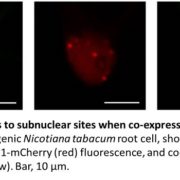
A Novel Class of Histone Readers
Blog, The Plant Cell, The Plant Cell: In BriefPolycomb-group (PcG) proteins are part of an epigenetic memory system that regulates global gene expression throughout development in multicellular eukaryotes (Butenko and Ohad, 2011). Sophisticated mechanisms recruit high molecular weight complexes of PcG proteins to specific targets in the genome.…
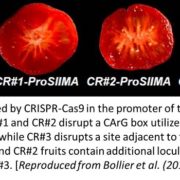
A Conserved Mechanism to Terminate Floral Meristems
Blog, The Plant Cell, The Plant Cell: In BriefIn plants, the balance between stem cell renewal and loss is carefully maintained by intricate regulatory networks. Although the root and shoot apical meristems can in principle continue to grow and self-renew indefinitely, the floral meristem is terminated once flower formation is completed. The precise…
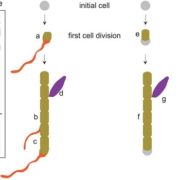
Axis of Algae: Disruption of Basal Cell Fates in the Brown Alga Ectocarpus
Blog, Research, The Plant Cell, The Plant Cell: In BriefPolarization may be bad for civil discourse, but sometimes polarization can be good—for example, if you’re a multicellular organism setting its body axes. In many organisms, polarity within the zygote sets the stage for an asymmetric cell division that defines the apical-basal polarity of the developing…
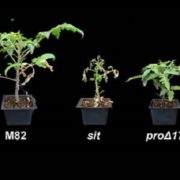
Guarding the Gates: How PROCERA Helps Keep Tomato Plants From Wilting
Blog, Research, Research Blog, The Plant Cell, The Plant Cell: In BriefPlants have two major ways of dealing with drought stress. First, when water levels are low, the phytohormone abscisic acid (ABA) induces stomatal closure. Soon after, growth, flowering, and fruit development take a back seat to plant survival. This suppressed growth is mediated by decreased activity…
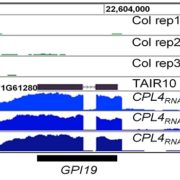
Granting an Extension: mRNAs Produced by Read-through from Small Nuclear RNAs
Blog, Research, Research Blog, The Plant Cell, The Plant Cell: In BriefThe C-terminal domain (CTD) of RNA polymerase II (Pol II) extends from the catalytic core and consists of repeats of a seven-amino acid motif. The CTD functions in the regulation of Pol II function and is subject to just about every protein modification you can think of, including methylation, acetylation,…

Disarming the Assassins Within: Plant Cells Use S-Nitrosylation to Deactivate the HopAI1 Effectors
Blog, Research, Research Blog, The Plant Cell, The Plant Cell: In BriefThe assassin who injects a bead of poison by stabbing his victim with the tip of his umbrella has got nothing on plant pathogenic bacteria such as Pseudomonas syringae, which injects dozens of effector proteins into plant cells. These effectors act as tiny assassins to take out host defenses by diverse…
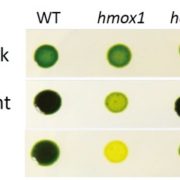
Blue Light Perception via Chlorochrome? — Give Us the Greens of Summer
Blog, Research, Research Blog, The Plant Cell, The Plant Cell: In BriefWhat do photosynthesis, neonatal jaundice, and a next-generation solar cell have in common? All involve tetrapyrroles, complex molecules with four linked pyrrole rings, each ring containing one nitrogen and four carbon atoms. Tetrapyrroles exist in either cyclic or linear form and have a wide variety…

